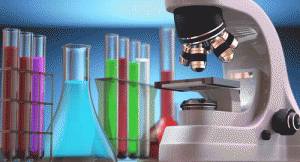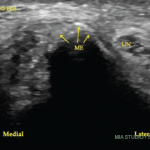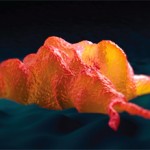 Many human nerve injuries can be treated with surgery. However, full recovery is thwarted in some cases by the loss of nerve segments at the site of injury. Anne-Laure Cattin, a graduate student at the MRC Laboratory for Molecular Cell Biology in London, and colleagues published the results of their detailed investigation of the process of peripheral nervous system regeneration online Aug. 27 in Cell. They found that blood vessels that are induced by macrophages are essential for nerve regeneration. The investigators were especially intrigued by the migration of Schwann cells across damaged nerve stumps that completed the regeneration process.
Many human nerve injuries can be treated with surgery. However, full recovery is thwarted in some cases by the loss of nerve segments at the site of injury. Anne-Laure Cattin, a graduate student at the MRC Laboratory for Molecular Cell Biology in London, and colleagues published the results of their detailed investigation of the process of peripheral nervous system regeneration online Aug. 27 in Cell. They found that blood vessels that are induced by macrophages are essential for nerve regeneration. The investigators were especially intrigued by the migration of Schwann cells across damaged nerve stumps that completed the regeneration process.
Researchers have long known that multiple cell types must work together to regenerate adult tissue. The repair and/or replacement of damaged or lost cellular structures may be induced by hypoxia. Indeed, new blood vessels typically form in response to tissue hypoxia. Cattin and colleagues studied the process of tissue regeneration in rodents by creating two nerve stumps and examining how the stumps became connected naturally via the formation of a long bridge of new tissue. They found the bridge contained multiple cell types, of which only the macrophages exhibited a detectable hypoxic response. Their documented macrophage response to hypoxia was consistent with the established role of macrophages in the promotion of angiogenesis during wound healing. By the second day post nerve injury, the researchers found that macrophages in the hypoxic tissue had increased levels of hypoxia-inducible factor 1-α (HIF-1α), as well as increased production of VEGF-A. The presence of VEGF-A caused endothelial cells to migrate to the injury site, where they created a polarized vasculature within the bridge.
Cattin and colleagues then turned their attention to strains of mice whose macrophages were genetically engineered to not produce VEGF-A. They found that macrophages in these mice were recruited to the bridge. The bridges in the knockout mice were undervascularized relative to the bridges in the wild type mice. Moreover, the mice with the greatest inhibition of VEGF-A had the fewest blood vessels within the bridge.
When the investigators examined the newly formed blood vessels in wild-type mice more closely, they found the blood vessels were organized in a way such that they pointed in the direction the Schwann cell cords needed to travel to repair the peripheral nerve. The researchers used various imaging techniques to reveal that migrating Schwann cell cords make direct physical contact with the new polarized blood vessels and interact with the endothelial cell tubules at multiple discrete sites during migration. The Schwann cells exhibited a dynamic, amoeboid-like migration that was characterized by the extension of protrusions followed by a contraction of the rear part of the cell.



